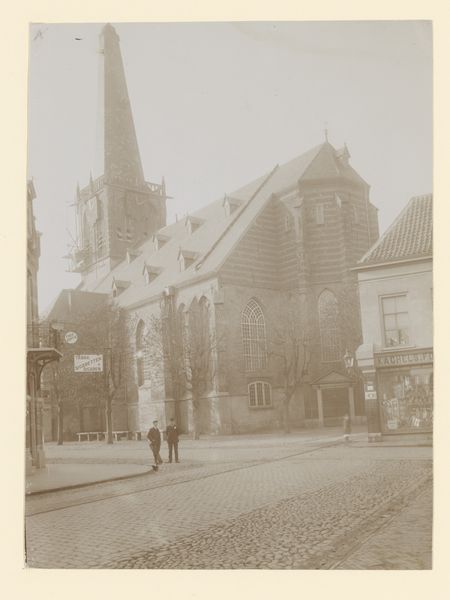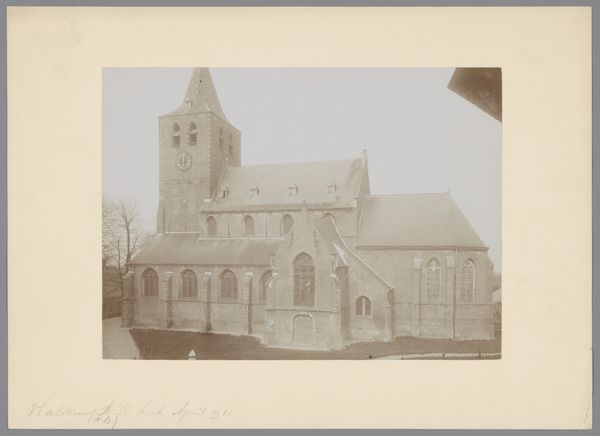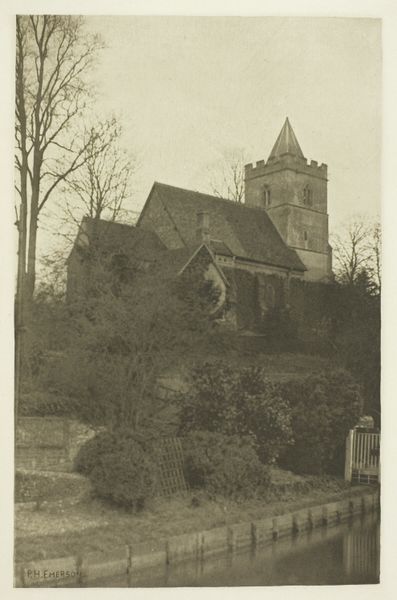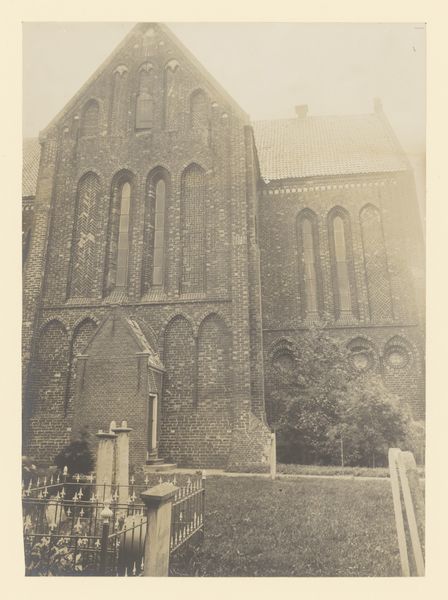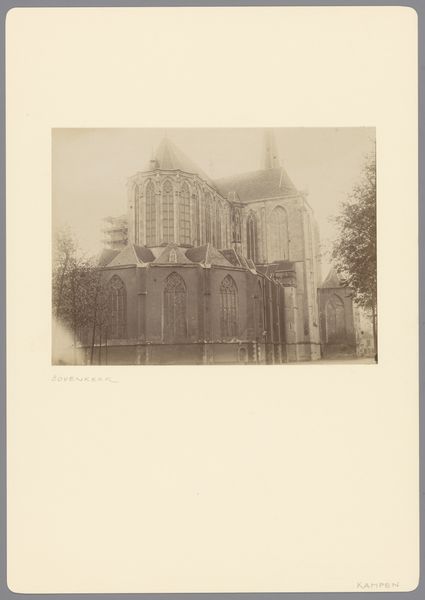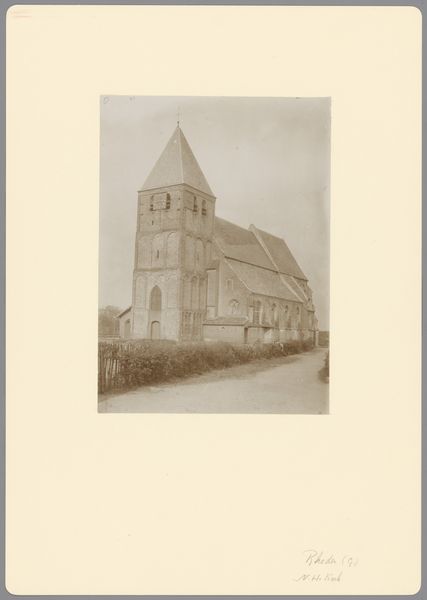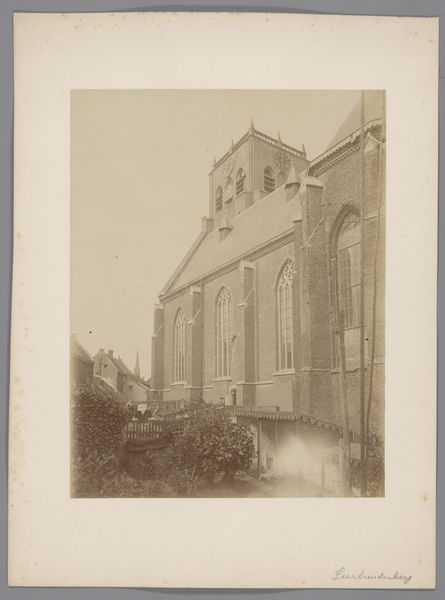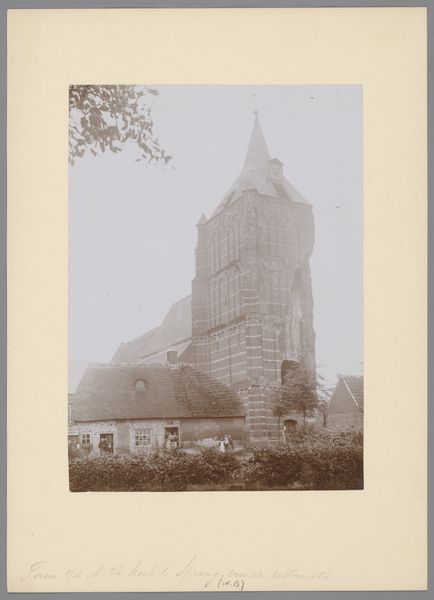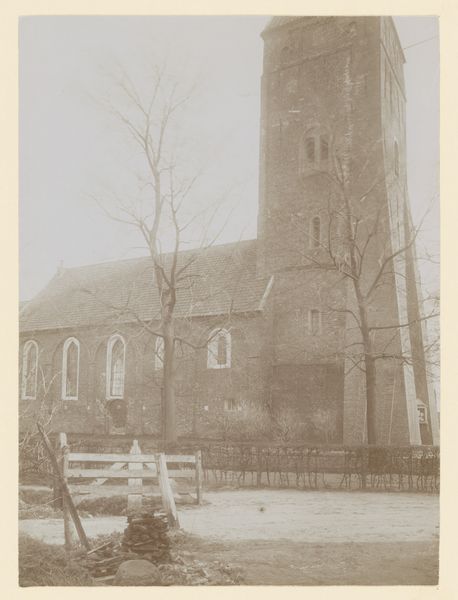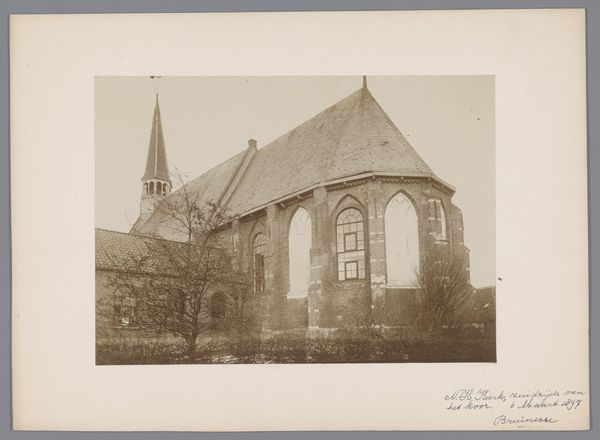
Dimensions: height 201 mm, width 145 mm
Copyright: Rijks Museum: Open Domain
Editor: This photograph, "Gezicht op de Sint Catharinakerk te Doetinchem," taken around 1910, seems to capture a quiet moment of civic life. The scaffolding around the church spire immediately caught my eye. What does that suggest to you about its role at the time? Curator: Well, the scaffolding immediately highlights the church's active role within the community. It was a site not just of worship but likely also civic pride and ongoing investment. Preservation is always a political act; consider who decided to spend resources maintaining this particular building, and what that says about their values. Who does the building serve? Who commissioned this photograph, and what were they hoping to communicate? Editor: So, it's about more than just aesthetics; it’s about what it represents. It’s also interesting to think about how photographs of buildings became ways of promoting cities. Curator: Exactly! These images often played a part in constructing a particular narrative about the town - about its history, progress, and importance. How do the bare trees contribute to that message? What if it was springtime in the image? How might the trolley or the figures to the side contribute to that story? Editor: Good point! The bare trees lend a starkness, a sense of enduring history. Seeing that trolley reminds me of a different pace of life compared to our own. Curator: Precisely. And that comparison, that reflection on change, is often the silent argument photographs like this make. What will be worth remembering? How does a community define its place in time? Editor: I'm definitely going to think differently about old photographs now. This was much more layered than I initially thought! Curator: These visuals really do become powerful historical records. The story is waiting to be unlocked with research and with carefully considered questions.
Comments
No comments
Be the first to comment and join the conversation on the ultimate creative platform.
